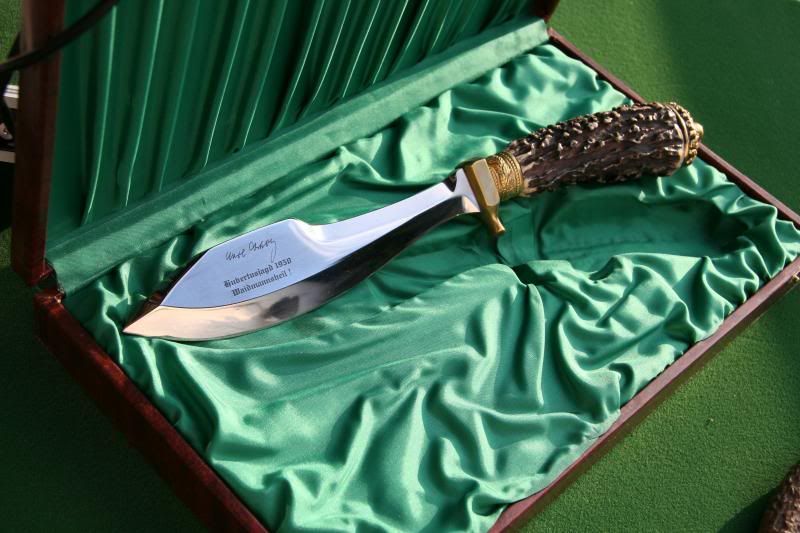Saufaengerkid, the Waidblatt you posted was apparently made up as a pure presentation item. None of the pics in Frvert's Publishings Shows a sheat like your's, resembling in some way the contemporary RAD-Hauer sheath. The pics published by Frevert showed sheaths just like mine. Additionally, no pre-WW2 Picture known to me of the Waidblatt Shows the grips inlaid with the badge of the Deutsche Jägerschaft.
BTW, when I was a boy, I met Frevert myself. he signed my example of "Das Jagdliche Brauchtum" for me then. My hunting family then highly respected the man. I learned better by now, as I was a forester of comparable education and responsibility myself and learned a lot about the background of the ideas he wrote about: A lot of the "age old German hunting traditions" he propagated was simply invented by him himself, other was misinterpreted by him. As a professional forester he concentrated on the hunting side job, just part of a forester's duties. He was a man who was a true servant of top Nazi Hermann Göring, his master in Rominten and elsewhere. His conduct as head warden of the Bielowiez forest in then Poland, then last home range of the European Wisent, a close relative to your buffalo/Bison, made him a war criminal. He was a man who would walk over corpses to achieve his goals. I don't hold him in high respect any more, neither as a professional nor a human. Granted, he had some good ideas regarding deer management too, mostly overlooked by my customers. These I use sometimes too. Quoting "Frevert" sometimes does wonders, even today!
BTW, when I was a boy, I met Frevert myself. he signed my example of "Das Jagdliche Brauchtum" for me then. My hunting family then highly respected the man. I learned better by now, as I was a forester of comparable education and responsibility myself and learned a lot about the background of the ideas he wrote about: A lot of the "age old German hunting traditions" he propagated was simply invented by him himself, other was misinterpreted by him. As a professional forester he concentrated on the hunting side job, just part of a forester's duties. He was a man who was a true servant of top Nazi Hermann Göring, his master in Rominten and elsewhere. His conduct as head warden of the Bielowiez forest in then Poland, then last home range of the European Wisent, a close relative to your buffalo/Bison, made him a war criminal. He was a man who would walk over corpses to achieve his goals. I don't hold him in high respect any more, neither as a professional nor a human. Granted, he had some good ideas regarding deer management too, mostly overlooked by my customers. These I use sometimes too. Quoting "Frevert" sometimes does wonders, even today!





Comment